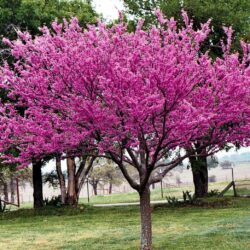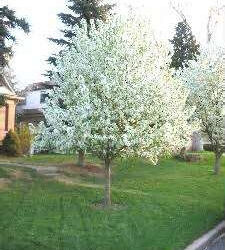Flowering trees add beauty and variety to landscapes, and for residents and enthusiasts in the Midwest, there are many species that can enhance local environments. This article explores a selection of flowering trees suitable for growth in these locales, touching on their botanical characteristics, environmental needs, and aesthetic contributions to municipal and residential settings.
Eastern Redbud (Cercis canadensis)
One of the most cherished native species in the American Midwest is the Eastern Redbud. This tree is celebrated for its stunning early spring blooms of pink and purple flowers, which appear in profusion before the leaves, creating a striking contrast against the late-winter landscape. The redbud is a small to medium-sized tree, typically reaching heights of 20 to 30 feet, which makes it an ideal choice for smaller city properties in areas like Omaha and Bellevue.
Redbuds are fairly adaptable to different soil types but prefer moist, well-drained soil conditions. They are also known for their heart-shaped leaves, which turn a yellowish color in the fall, adding seasonal interest. These trees are excellent for residential landscapes and public spaces, providing habitat and food sources for local wildlife, including butterflies and birds.
Crabapple (Malus species)
Crabapple trees are highly valued for their spectacular spring bloom and the ornamental fruit that follows. Flowers range in color from white to deep pink, depending on the species and cultivar. The fruits, while often too tart for raw consumption, can be used in jellies and preserves, and they provide food for wildlife during the fall and winter months.
Crabapple trees are versatile and adaptable to a variety of soil conditions but perform best in well-drained soils with full sun exposure. They are a common choice for street trees in urban areas like Elkhorn and are noted for their disease resistance and relatively small stature, which makes them suitable for diverse landscape settings.
Lilac Trees (Syringa species)
Lilac trees are beloved for their fragrant, colorful flowers that bloom in late spring. The flowers come in shades of purple, pink, and white, creating a delightful sensory experience in any landscape. Lilacs can range in size from small shrubs to larger tree-like forms, making them versatile for different planting needs.
Lilac trees prefer well-drained, slightly alkaline soil and full sun exposure to thrive. They are hardy and can tolerate the cold winters typical of the Midwest. These trees are excellent for planting in gardens, along property lines, or as standalone ornamental features. The dense foliage also provides good privacy screening.
Pear Trees (Pyrus species)
Pear trees are popular for their beautiful spring blossoms and the delicious fruit they produce. The flowers are typically white and appear before the leaves, creating a stunning visual display. While some pear trees are grown primarily for their fruit, ornamental varieties are chosen for their aesthetics.
Pear trees require well-drained soil and full sun for optimal growth. They are relatively low-maintenance and can adapt to various soil types. These trees are ideal for adding both beauty and utility to residential landscapes, providing shade and edible produce.
Serviceberry Trees (Amelanchier species)
Serviceberry trees are known for their attractive white flowers that bloom in early spring, followed by edible berries that attract birds and wildlife. The berries are similar to blueberries and can be used in various culinary applications.
Serviceberry trees thrive in well-drained soil and can tolerate both full sun and partial shade. They are adaptable and hardy, making them suitable for a variety of landscape settings. These trees are perfect for adding early spring interest and providing food for local fauna.
Serviceberry Trees (Amelanchier species)
Serviceberry trees are known for their attractive white flowers that bloom in early spring, followed by edible berries that attract birds and wildlife. The berries are similar to blueberries and can be used in various culinary applications.
Serviceberry trees thrive in well-drained soil and can tolerate both full sun and partial shade. They are adaptable and hardy, making them suitable for a variety of landscape settings. These trees are perfect for adding early spring interest and providing food for local fauna.
For those residing in or near Omaha, La Vista, Papillion, Elkhorn, Gretna, Wahoo, and Bellevue, planting any of these flowering trees can contribute to the beautification of personal properties and public spaces while supporting local ecosystems. Whether the goal is to enhance a backyard or a boulevard, these trees offer both aesthetic pleasure and environmental benefits, making them valuable additions to any landscape in the Midwest.







